Damage Control: Preparing for Winter Storms
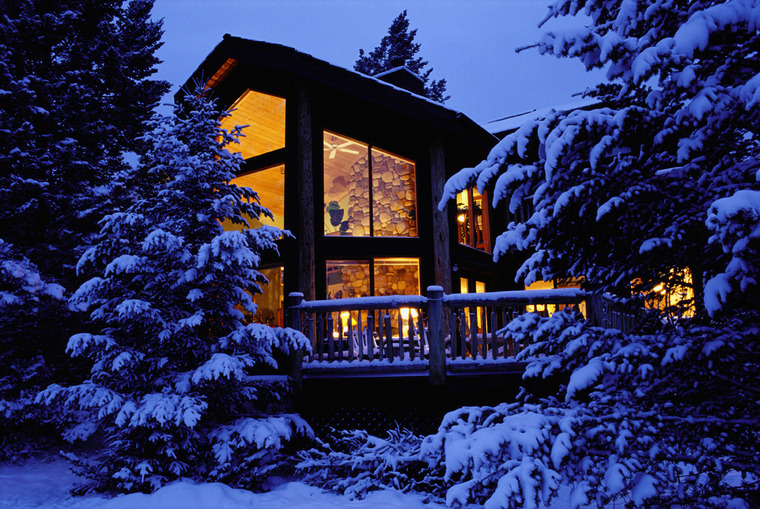
 Last week we shared tips for preventive home maintenance to help you and your home fare better through the winter months. This week we want to take this topic a bit further by focusing on disaster preparedness. No one wants to think about disasters, but being organized can help bring you and your family a peace of mind. Here are some tips for preparing for events, such as major winter storms, natural disasters, and evacuations. In the coming weeks, we will have more on how to stock an emergency kit and manage property damage.
Last week we shared tips for preventive home maintenance to help you and your home fare better through the winter months. This week we want to take this topic a bit further by focusing on disaster preparedness. No one wants to think about disasters, but being organized can help bring you and your family a peace of mind. Here are some tips for preparing for events, such as major winter storms, natural disasters, and evacuations. In the coming weeks, we will have more on how to stock an emergency kit and manage property damage.
Power Outages
Power outages are relatively common during large weather-related events; however, losing power for a few days can be highly inconvenient – and even dangerous. If you aren’t in immediate danger, you will want to make sure you are prepared with some basic necessities to survive the cold, darkness, and boredom that can accompany days without electronic stimulants.
· Keep a supply of flashlights and batteries on hand. These items easily find their way to the back of drawers, or misplaced in rooms. Make sure they are easy to find in absolute darkness. Keep flashlights in your bed side table and use a magnet to secure a flashlight to your fridge. Keep plenty of batteries on hand; in the case of an emergency, batteries can be very difficult to find.
· Don’t rely on candles. Candles are dangerous if you have pets or small children, and they can also cause a fire if not properly attended.
· Have a crank or battery powered AM/FM radio available so you can keep up on the news.
· Use your cell phone sparingly or use a charger with an alternative energy source to make sure your phone is fully changed during an emergency situation.
· When preparing for the winter season, make sure you stock up on food that is easy to eat without the help of a microwave or stove.
· Keep your refrigerator cold. The more often you open the fridge, the more quickly the temperature will rise and your food will spoil. Here is a useful guide for how long food will last after an outage.
· If you have small children, keep a stock of activities to entertain them without the aid of electricity.
· You may be able to use a BBQ if the weather is permitting or if you have a covered patio. It is very important to remember to never bring your BBQ inside for food consumption or heat. Using a BBQ or generator inside can lead to carbon monoxide poisoning.
Natural Disasters
In the instance of a natural disaster, such as a tsunami or earth quake, turn off your water heater and gas tanks. Gas leaks can be very dangerous, so if you smell gas or hear a blowing or hissing noise, you will want to leave the premises immediately and call your gas provider. If you are concerned for your family’s safety in your home, follow an evacuation plan (see “Evacuations” below).
If you are preparing for a major wind storm or hurricane/tornado, you may actually have some forewarning. In that instance, here are some helpful tips:
· Secure furniture to walls. If you live in earthquake prone territories (or have small children), securing tall bookshelves to your wall is a must. This will reduce damage and decrease the odds that someone will get injured.
· Bring outdoor items inside, including your patio furniture, pots, barbeques, etc. These items could get lost or cause greater damage to your property.
· In high wind situations, use storm shutters or board up your windows to prevent trees or other objects from causing damage.
· Fill your bathtub with clean water. In the event that water is shut off, this will be valuable for flushing the toilet and personal hygiene.
· If you have a fireplace or a wood burning stove, stock up on firewood to ensure your home stays warm.
Evacuations
During a weather-related emergency, your first priority is usually to stay in the safety of your own home. But sometimes this is not possible. With the help of your family, it’s a good idea to make an evacuation plan. Here are some possible issues to consider:
· Come up with a plan. If something should happen, it is best that everyone knows what the drill is ahead of time. Have a plan about where the family meets, a backup place to stay, and if you have family pets, how they will be evacuated, as well.
· A designated place to meet if your family cannot evacuate together.
· Designate a spot in your house and store all important documentation together, so someone can grab copies of birth certificates, home inventory, insurance documents, etc.
· Create a list of other important items you would like to take in case of an emergency, such as family heirlooms, a toy, a laptop, etc. Each person should know what those special items are, and be able to grab them quickly.
· And don’t forget to practice your plan together as a family.
For more information on Winderemere Evergreen, please contact us here.
Baby Boomers Have Homebuilders Rethinking Home Design

 The baby boomer generation, which is currently estimated to be aged between 48 and 67 years old, comprises almost one-third of the nation’s population. The demand that this lucrative segment of the population has on housing is causing homebuilders to rethink how they design homes. In fact, the National Association of Home Builders (NAHB) has a 50+ Housing Council which focuses entirely on the housing needs of aging baby boomers. A study commissioned by the NAHB suggests that baby boomers and older homebuyers want a maintenance-free lifestyle that frees them up to travel, socialize, and pursue other activities. Perhaps this is why real estate professionals report an increase in the number of baby boomers who are interested in condominiums and townhomes. There is also growing popularity for luxury units because they appeal to empty-nester baby boomers who no longer want the maintenance of a single family home, but don’t want to scale back on certain features and amenities either.
The baby boomer generation, which is currently estimated to be aged between 48 and 67 years old, comprises almost one-third of the nation’s population. The demand that this lucrative segment of the population has on housing is causing homebuilders to rethink how they design homes. In fact, the National Association of Home Builders (NAHB) has a 50+ Housing Council which focuses entirely on the housing needs of aging baby boomers. A study commissioned by the NAHB suggests that baby boomers and older homebuyers want a maintenance-free lifestyle that frees them up to travel, socialize, and pursue other activities. Perhaps this is why real estate professionals report an increase in the number of baby boomers who are interested in condominiums and townhomes. There is also growing popularity for luxury units because they appeal to empty-nester baby boomers who no longer want the maintenance of a single family home, but don’t want to scale back on certain features and amenities either.Oh My Aching Back: Cabinet Heights to the Rescue
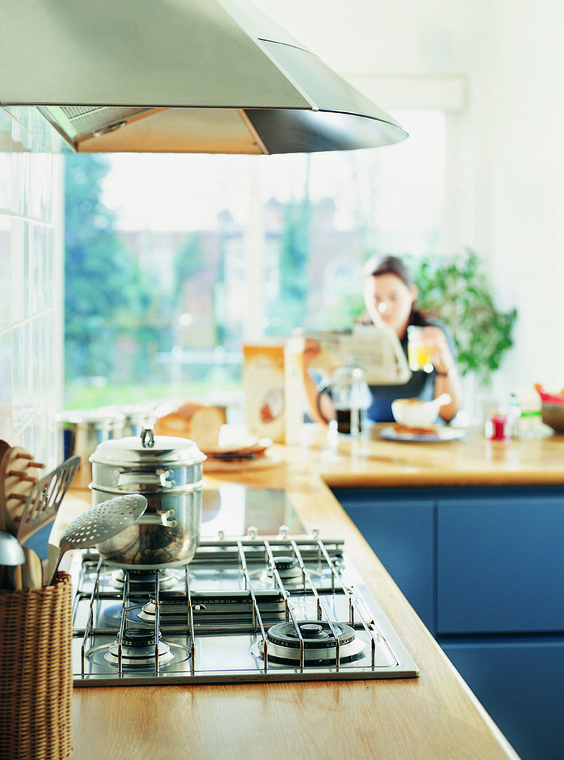
 When approaching a kitchen or bath remodel or new construction, you can make things a lot more comfortable by getting creative with the heights of your base cabinets.
When approaching a kitchen or bath remodel or new construction, you can make things a lot more comfortable by getting creative with the heights of your base cabinets.
Standard heights traditionally have been 36” tall (including the thickness of the countertop material) for kitchen base cabinets, and 29” – 30” tall for bathrooms. These heights are good overall, but are surely not set in stone and can make life a lot more comfortable with some tweaking.
Consider the users’ heights when deciding on cabinet heights. If everyone in the household is tall, consider having the main area of the kitchen raised an inch or so. Chopping will be much more comfortable that way, and it will help avoid arm and back fatigue. If household members are various heights, consider having one area raised higher and another area at the standard height. If you have someone who requires lower heights, such as a wheelchair user, consult a design professional to assist with their particular needs.
In the bathroom areas, consider the primary users when determining the best heights. The master bath would likely serve adults, so having the base vanities at a taller 34” height will help to avoid stress on the users’ backs when utilizing the sink for face washing and tooth brushing. If a child uses the area, keep a small step stool handy for those times. A main hall bath outside the children’s rooms could have the standard height. If the children are a bit older (and taller) and you intend to remain in the home longer than a few years, consider the taller height there too for when the children are taller, as they do grow quickly!
Just a few adjustments can make for happy backs, and aren’t difficult at all to achieve if you plan ahead. For more information on Windermere Evergreen, please contact us here.
Follow the Direction in Which the House Is Growing
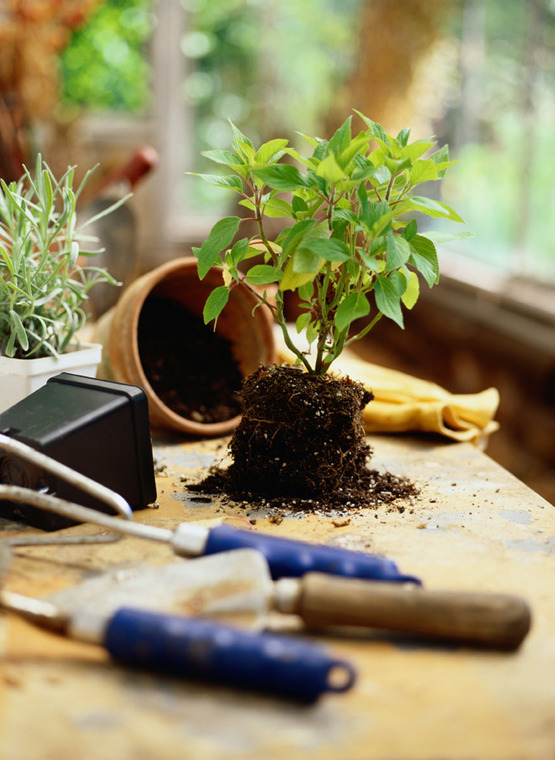
 When you first move into your new home, it is likely you will have a list of items you must change right away, to fit your design and practical needs. As far as your landscaping goes, I recommend that you maintain what you have for at least one full year—the entire growing cycle of everything in your lot. This way you may avoid chopper/whacker/digger remorse: “Oh, I wish I’d known that was a flowering syringa (lilac) and not just a weedy-stick-y looking thing.” Additionally, if you begin planting right away, you won’t really know your micro-areas and could well be pulling dead, stick-like plants, shrubs, trees which you only recently purchased. It takes a bit of self-control to avoid that initial “clean-up” and planting frenzy, but you may thank yourself eternally if you can hold off.
When you first move into your new home, it is likely you will have a list of items you must change right away, to fit your design and practical needs. As far as your landscaping goes, I recommend that you maintain what you have for at least one full year—the entire growing cycle of everything in your lot. This way you may avoid chopper/whacker/digger remorse: “Oh, I wish I’d known that was a flowering syringa (lilac) and not just a weedy-stick-y looking thing.” Additionally, if you begin planting right away, you won’t really know your micro-areas and could well be pulling dead, stick-like plants, shrubs, trees which you only recently purchased. It takes a bit of self-control to avoid that initial “clean-up” and planting frenzy, but you may thank yourself eternally if you can hold off.
During that first year of restraint, watch the pattern of the sun across your lot/land, learn the irrigation system or lack thereof, note shady, sunny, dry, wet, windy, catbox, and understory areas. Note the neighbors’ yards, and see what works and doesn’t, and what you like and don’t. If you are so inclined, keep a gardener’s notebook with your observations.. Decide what you want your lot to be, and what fits into your lifestyle. Whether you are a retired, full-time master gardener, or an organic gardener, or you “just wanna bbq and kick-back”, there are landscapes to fit your ideal. Developing a plan for all of your “yard-rooms”, as 20th century British gardener Gertrude Jekyll named the various areas of the yard, is a comprehensive approach. Where do the kids play? Where are the garbage/recycle bins stashed?
Think about traffic patterns—where do you want paths, seating areas, and garden beds. Also consider “hardscape”: walls, fences, garden structures, screening from neighbors, and parking areas.
A well-planned landscape enhances the value of your home and lets you extend the walls of your home from lot line to lot line.
For more information on Windermere Evergreen, please contact us here.
Here’s Your Spring Maintenance Checklist
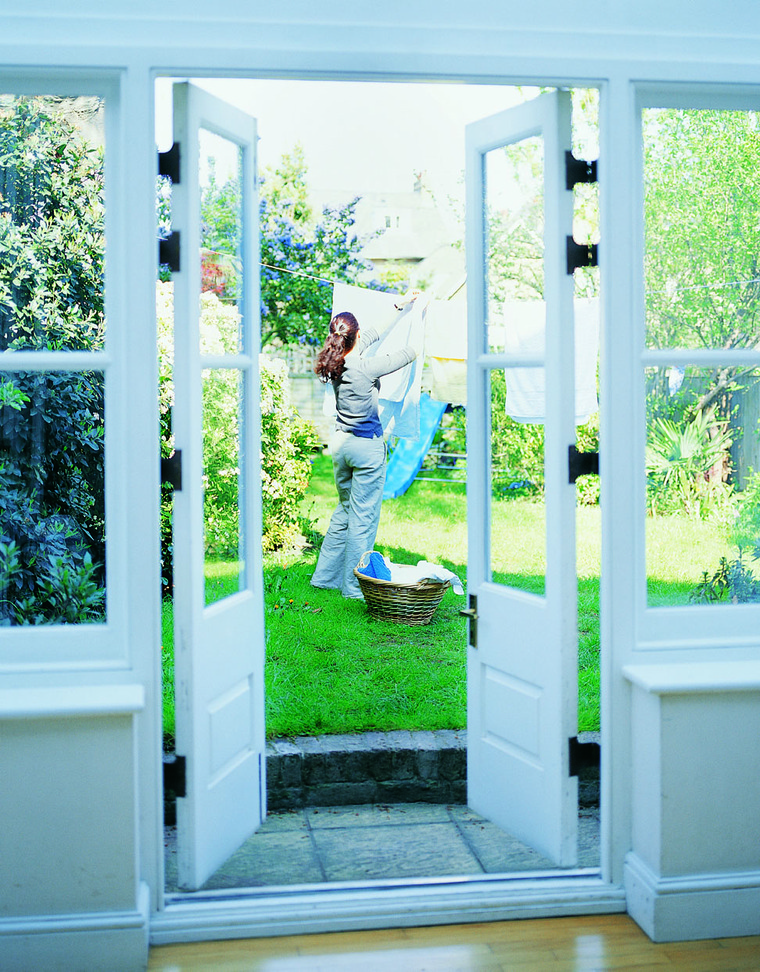
 Now that spring has sprung, let’s clear the cobwebs and get your home ready! Here is our quick guide to spring home maintenance:
Now that spring has sprung, let’s clear the cobwebs and get your home ready! Here is our quick guide to spring home maintenance:
Inspection top to bottom: Now that the weather is temperate you will want to check on how your home weathered the winter. Check the roof for leaks, the gutters for damage, and the siding for cracks. You will also want to inspect your basement or foundation for any shifts. Make repairs now to prevent further damage.
Clean out the gutters: April showers bring May flowers… so clear out the gutters to keep rain from pooling on your roof or near your foundation.
Pest control: Spring is mating season for eight legged critters, so sweep out cobwebs, clear debris, and check the nooks and crannies. If you live in an area prone to dangerous species like brown recluse or black widows, you may want to contact your local pest control, but otherwise household spiders do help eliminate other bugs.
Check your basement and attic for signs of other infestations. For more information on pest control go here: http://www.windermere.com/blogs/windermere/categories/living/posts/when-things-go-bump-in-the-night
HVAC system: If you have an air conditioner now is the time to check to make sure it is ready before summer gets here and everyone else is clamoring for maintenance. Now is a good time to check your home air filters and replace or upgrade to keep allergens at bay.
Clear the clutter: Do a sweep around the house and get rid of junk that you don’t use! Take a little time each week to tackle a room. Closets, playrooms, and basements can be especially daunting, but getting rid of old stuff and refreshing your space will go a long way!
Deep clean: On a nice day open the windows, dust, wipe, scrub, and clean. You will get a nice work out and your home will look and feel so fresh after a winter of being cooped up.
Update your décor: Add a splash of color to your home with small embellishments. Add a colorful vase, a lighter throw for your sofa, pretty pastel pillows, or spring-time candles, to upgrade your living space.
Take it outdoors: Let your throw rugs, curtains, and other tapestries air our outside. Shake off the dust, spot clean what you can and let everything bask in the sun for an afternoon.
Don’t forget the back yard: It may not be time to start up the grill, yet, but you can get started on your outdoor entertaining checklist. Check your lawn, and if you have some spare spots start filling in with seed. Check your outdoor plants, prune, plant bulbs, start to replenish soil for your garden, and mow, so you are ready to start when the season allows.
Speaking of the grill – if you have a gas grill you will want to pull this out and perform a maintenance check. Clean everything up and check to make sure all the gas lines are clear, as these can get clogged after sitting idle all winter. Make sure the grill is clear of spiders too, as they can build webs in the tubes, causing damage to your grill. You can start to bring out your garden furniture too, or clean it up if you left it covered outside all winter. Because before you know it, it’ll be barbecue season!
For more information on Windermere Evergreen, please contact us here.
8 Laundry Room Updates to Fit Any Budget
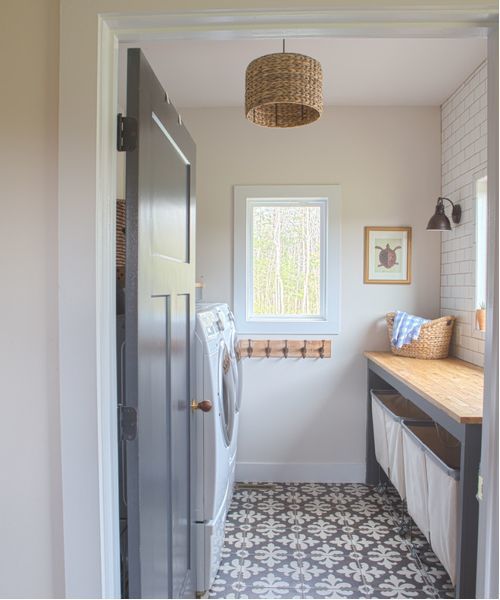

Laundry 1: Sharon Barrett Interiors, original photo on Houzz
Hoping to transform your tired laundry room into a sparkling clean, efficiently working space, but without the major costs of a full remodel? By not changing the layout or adding square feet, you can bring costs down while still making meaningful changes to your space. Use this guide to help you decide what to prioritize and what to put on the back burner, and give your laundry room an update that works with your space — whether your budget is $100 or $10,000.
If your budget is about $100: Clean, declutter and upgrade laundry baskets that have seen better days. It’s worth spending a little more for hampers that can stand up to heavy use.
Also think about which features would be most helpful to have, such as hampers on wheels, triple-sorter bins or stackable baskets that can tuck out of the way when you’re not using them.
If your budget is about $300: Clean up, get hampers and then give the walls a fresh coat of paint. A cheerful color can make your laundry room feel brand-new without breaking the budget — especially if you’re willing to DIY.
If your budget is about $500: Get hampers, fresh paint and then a soft new rug. You’ll appreciate the dose of color as much as the softness underfoot. If moisture is a concern (for example, if your laundry room is in the basement), you may want to choose a sturdy indoor-outdoor rug.
If your budget is about $700: Get hampers, fresh paint and a new rug, and then swap out the lighting.
Ample lighting is important when you’re trying to check laundry for stains and read labels, so pay attention to the recommended wattage of any light fixture you are considering — anything less than 75 watts may not shed enough light (especially if it’s the sole light source in the room).
If your budget is about $1,200: Tackle all the above, and then treat your space to some bonus storage and extras, like an ironing station, a drying rack or open shelves. If your laundry room is small, look for space-saving designs like folding drying racks, retractable clotheslines and wall-mounted ironing boards.
If your budget is about $3,500: What’s next? New appliances! A new washer and dryer can work more efficiently than older models, operate more quietly and get your clothes cleaner.
If you’re going from top-loading to front-loading machines, consider adding a countertop above to hold supplies and act as a surface for folding. Not in the market for a new set? Give your old machines a thorough cleaning to keep them running well (and smelling fresh).
If your budget is about $5,000: If you have more room in the budget, think about replacing the laundry room sink and faucet. If you’re hoping to avoid additional installation costs, choose a new model that is the same size as the old one. If you don’t already have a sink in the laundry room, adding one will require more extensive help from a plumber, and costs will be significantly more.
If your budget is about $10,000: So you have the hampers, paint, rug, lighting, storage, appliances and sink. If you still have room in the budget, think about tackling a bigger project like installing a new tile floor or a pet-washing station. Your furry friend may not thank you but sure will look cute sitting in that tub.
For more information on Windermere Evergreen, please contact us here.
How to Decorate a Rental
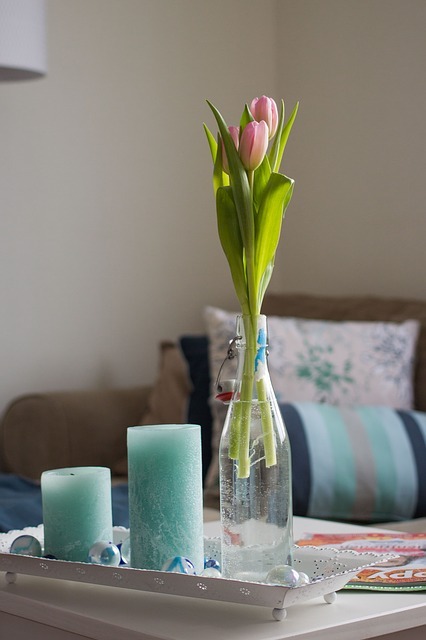

Abiding by rental rules is important, but so is style and making a house feel more like a home. Thus, we’ve put together a little list for you to help personalize your home, while still insuring you get your security deposit back by the end of it.
Storage – Let’s be honest, rentals often lack sufficient storage place, and since custom cabinetry isn’t usually an option for renters, investing in some added storage is key. Add some simple shelves, bookshelves, baskets, or under the bed storage.
Blinds – Vertical blinds may be the ultimate decorating sin. No one likes feeling as if they’re living in a motel room. We suggest you either take them down or hide them under curtains. Just don’t throw them out or you may not get your security deposit back!
Accessorize – Pillows, throws, candles, books, light fixtures… the only way to get a truly genuine space. This is by far the easiest and a MUST.
Wall Art – Those pesky holes might keep you from hanging art or photos on your walls, but when it comes down to it, they’ll only take a few minutes to patch up when it comes time to move out. This doesn’t mean you have to hang an entire art gallery, but hanging one statement piece and placing the rest of the photos on a mantel or shelf should do the trick.
Rugs – Last but not least, rugs: the peanut butter to your rental jelly. If there are scratched hardwood floors or stained carpets, you can cover those up easily with a throw rug. Not only that, a rug is a great investment piece that will add your personal flavor to any space. And they absorb noise and make a room feel comfy.
For more information on Windermere Evergreen, please contact us here.
Practical Resolutions: Making Your House a Home
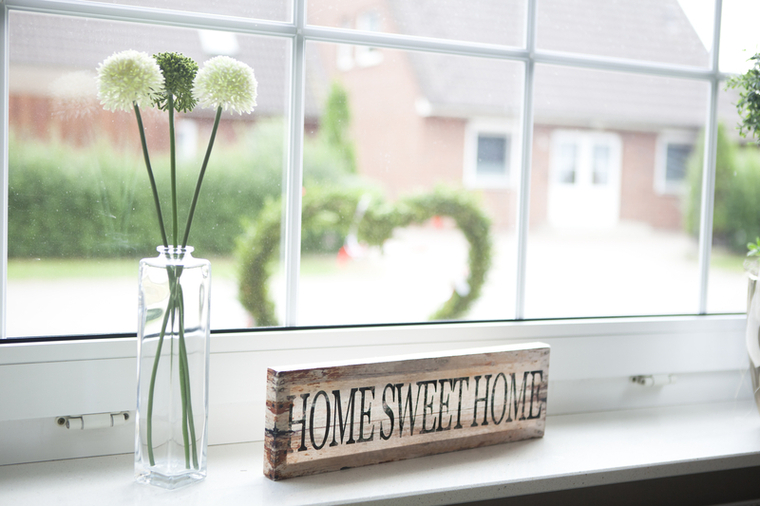

Your home is a reflection of your tastes, your lifestyle and your ambition, and many of us are regularly transforming our homes one way or another to fit our adjusting needs. Whether it is refreshing a room to fit your style, reorganizing a closet to accommodate the holiday excess, going green to save the planet and a couple of bucks or a complete renovation of your kitchen- homes take maintenance. Some projects come about on a whim, but if you have any plans to make your nest nestier here are some ideas for not getting too overwhelmed by the process- no matter how large or small the changes you want to make:
Get Organized: Whether it is your closets, books, pantry or your entire basement identifying the problem is the first step. Once you know where to focus your energy think about the purpose your space should fulfill, what you want it to look like and how you can keep it organized for the long-term. Sometimes getting organized is a matter of doing a little bit every day, or it is finding the right storage solution. Once you know what the problem is you can identify your steps, timeline and budget. Ultimately, getting rid of the clutter and holding onto items you love the most and use will keep your spaces easy to manage year round.
Do a little every day: Everyone has a different method to managing home madness; some have a weekly cleaning routine, some focus room by room others pile everything in the closet until they have to deal with it. If you have a goal of getting rid of old possessions and clutter, remodeling your home office or keeping your home cleaner spend five to thirty minutes a day working to achieve your goal. Here is a good idea for keeping your home clean by doing a little every day, rather than spending your weekend playing catch up.
Beautification/ Gardening: This year my big goal is to finally start our edible garden, but I have been overwhelmed by all the steps- from finding the right containers for the garden, deciding what to plant, when to start the starts, etc. Each region has different gardening challenges; the plants that thrive in Seattle are different than Spokane or San Diego so if you are planning on a garden make sure you familiarize yourself with local resources that will give you advice specific to your area. If you have any landscaping projects, keep in mind advance planning is paramount to making this affordable, timely and sustainable. If you are planning on putting your house on the market eventually, make beautification a priority and plan your exterior in a way that will increase the curb appeal of your home in the future.
Home Improvement Projects: If you have an ongoing list of home improvement projects, make sure you have the right tools in your toolbox and prioritize and plan. You don’t want to spend every weekend working on dripping faucets so create a routine. When looking at the year ahead, think about seasonality of the projects. It is important to know when to ask for help from a professional in order to have repairs done right in the first place to avoid putting yourself at risk or the safety of your home.
Go Green: If your resolution this year is to save money and the planet by reducing your carbon footprint there are projects you can do large and small. Start with an energy audit, that way you know where your energy is actually being used- you may be surprised. Easy fixes start with replacing light bulbs with CFLs and buying energy cords that limit vampire appliances to use energy when they aren’t in use. If you are replacing your old appliances with newer energy efficient models, make sure you check into recycling programs in your area. Go here for more green resolution ideas.
Renovations: Whether you are doing the renovations yourself or working with a contractor, projects of scale are never easy. Make sure you plan for the inconvenience of going without a kitchen as well as the details of putting your new kitchen in place. Also, before investing in a renovation, make sure you will get a return on your investment when you resell. If you are looking to increase the value and marketability of your home check out this list before you start tearing down walls.
For more information on Windermere Evergreen and our team please contact us here.
New Year, Bold Home
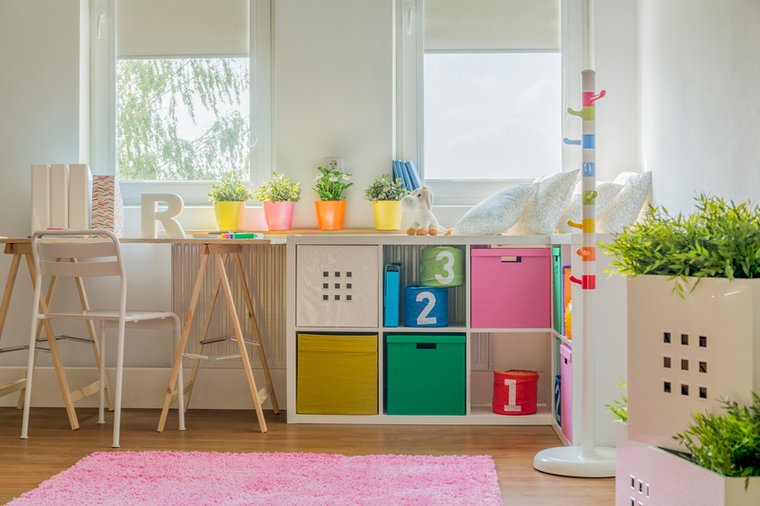

“New year, new me” is so 2017. We thought we would change things up a bit because frankly, 2018 deserves better and so do you. This is the year to be bold. In fact, if there was a color named “bold” we would recommend it for your kitchen remodel. Once a month we will be showing you a different way to go bold with your home. These will be easy, inexpensive changes to add character and life to various rooms and spaces.
Our first? Colorful, crafty storage. Many New Year’s Resolutions include decluttering your life. Not only is this great for your house, but it can also be very therapeutic. However, instead of putting the same old containers or storage back on your shelves, opt for a modification. For those of you who are more DIY, try painting the lids of mason jars your favorite bright color. If you are more of an online shopper than DIY queen, we found some storage options that are cute and simple: These are the perfect solution to keeping your kids playroom tidy, while still feeling fun friendly. Try these for your office space that feels a little dull and in need of inspiration. If you’d rather do something more permanent, paint the back wall of your storage shelves, it adds dimension and character. If you don’t want to permanently color your bookcases, try fabric or wallpaper. If you choose wallpaper, tie in the color with the items that are filling the shelves (hint: match to your mason jars).
We’ve mandated that 2018 is the year to be bold, but to also have fun. So start by adding some color to otherwise boring old storage spaces! If you go bold with your home each month this year, you can bet that the ending of 2018 will be sweeter than last.
For more information on Windermere Evergreen and our team, please contact us here.
 Facebook
Facebook
 X
X
 Pinterest
Pinterest
 Copy Link
Copy Link
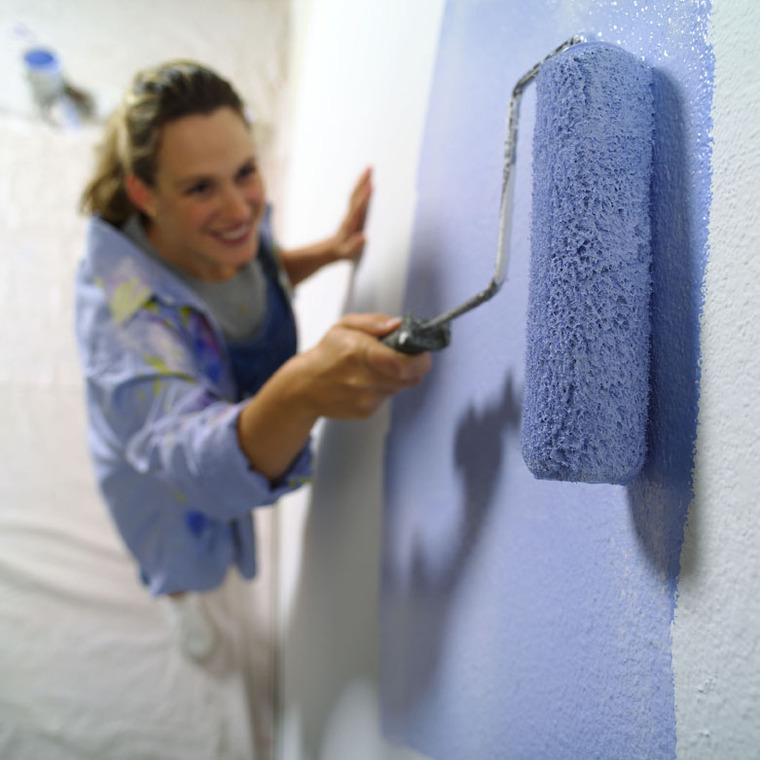
 One of the most frequent questions interior designers hear is how to choose colors for a home. We all love color, but some people are afraid of using color in their home. Many find they fear committing to a certain color scheme or making a mistake after it is all done. Here are some ideas to help to get you started.
One of the most frequent questions interior designers hear is how to choose colors for a home. We all love color, but some people are afraid of using color in their home. Many find they fear committing to a certain color scheme or making a mistake after it is all done. Here are some ideas to help to get you started.